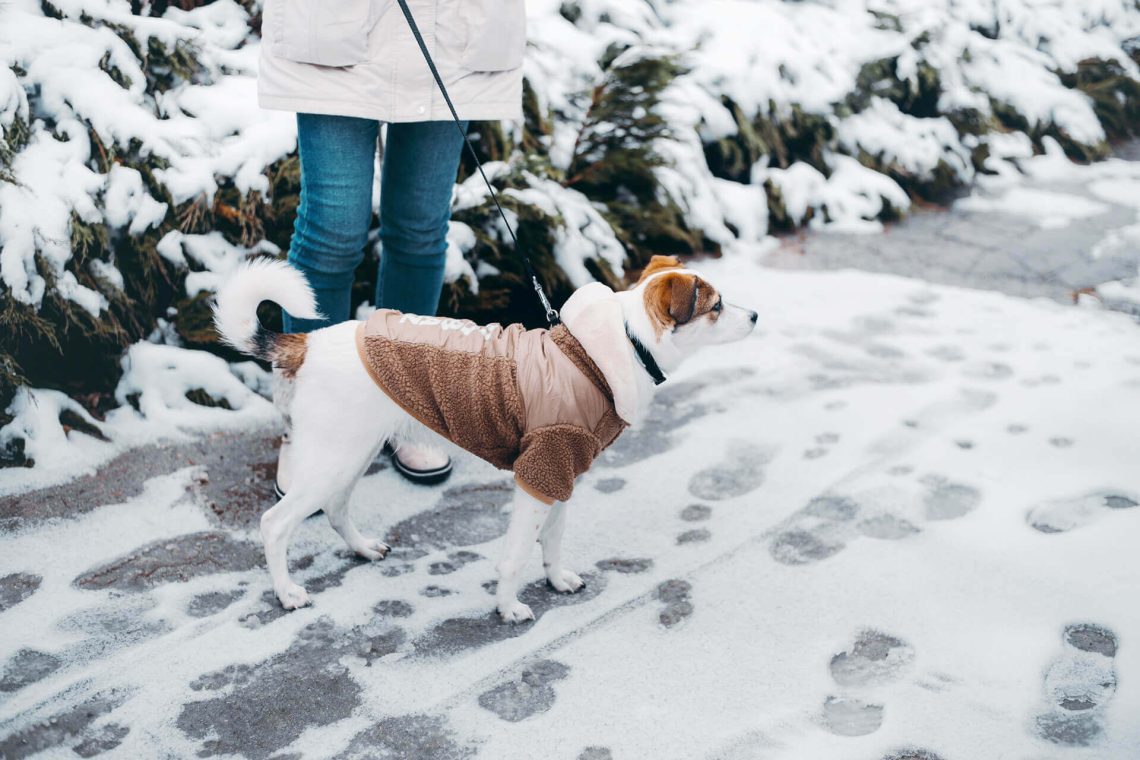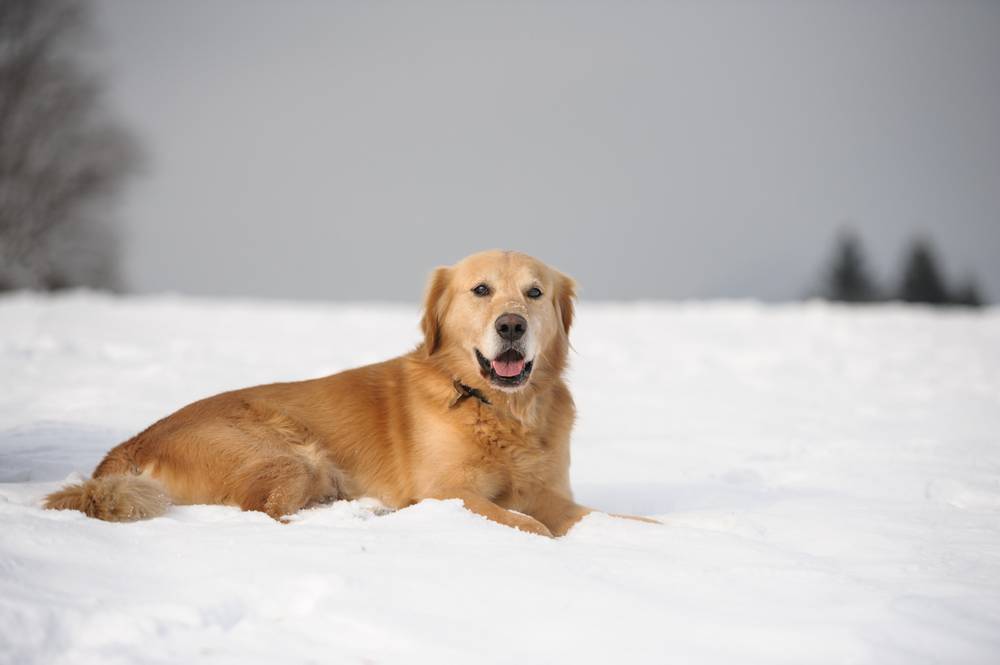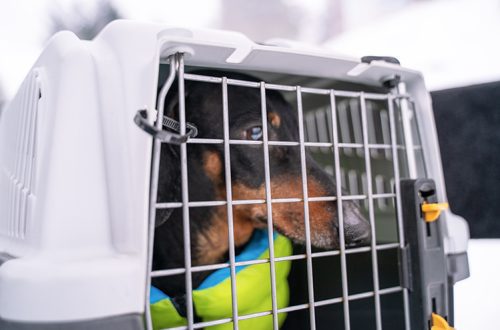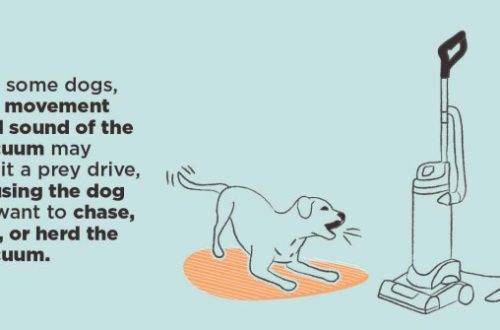
How to protect a dog’s paws from reagents?

Contents
What are the dangers of reagents for a dog?
Utilities actively use chemicals, as they corrode the snow and ice knocked down on the pavement, thereby simplifying the work of the janitors. Every winter, city dwellers face the fact that white stains from salt, yellow stains or even cracks appear on leather shoes. The same thing happens to the skin on animal paws when chemicals come into contact with the surface of the paw pads. This provokes itching, dryness, the appearance of ulcers and cracks.
Small dogs suffer the most from reagents, as they have very delicate skin.
The best way to protect their paws in this case is to avoid contact with chemicals. Such dogs, due to their low weight, will not be difficult to carry on their hands through dangerous places on the street.
As a result of walking along the path, generously strewn with reagents, the pet may become irritated. And after the appearance of ulcers or itching, the dog will begin to lick its paws, and harmful substances can enter the body. It is important to keep the situation under control and not bring it to this.
How to protect a dog’s paws from reagents?
There are many ways to protect, here are some of the most effective:
Use of protective gels and ointments, which create a barrier between the dog’s skin and the external environment. Ordinary Vaseline is also suitable – an inexpensive and affordable option. You can also use special aerosols that do not let water through. Simply apply your chosen product to your dog’s paws before a walk, and dangerous reagents will not affect his skin.
Dog shoes from reagents – this is a very effective option, so the pet’s paws will definitely remain safe. True, not every dog will agree to wear boots, so they are usually worn only on small, decorative pets.
Choice of route. Try to walk around yards and grassy areas under snow, avoiding sidewalks. It is the footpaths that are most often treated with reagents.
After the walk, let the pet sit warm for a while so that the paws warm up, and only then go to wash them. Just wiping the limbs is not enough: salt or chemistry may remain on them. Ice lumps form between the toes on the paws of the pet, they can damage the skin, so you should gently massage the paws so that the snow melts faster. Paws should be washed in warm, but not hot, water using a drop of dog shampoo.
Which is better?
Experts advise choosing ointments for dog paws against reagents – the most effective remedy. There are special ointments, gels, aerosols and wax that are applied to the fingertips and between them before going outside, and thoroughly washed off after a walk. Such products allow not only to protect the skin from the negative effects of chemicals, but also from the cold.
If your pet agrees, then dog shoes from reagents are well suited. This element of dog ammunition usually has a soft sole to make it comfortable for the animal to move around; many models are made taking into account the characteristics of a particular breed.
Take care of your pet’s health – prepare an ointment for dog paws against reagents in advance. Remember to check your skin daily for irritation.
Photo:




